Case Studies
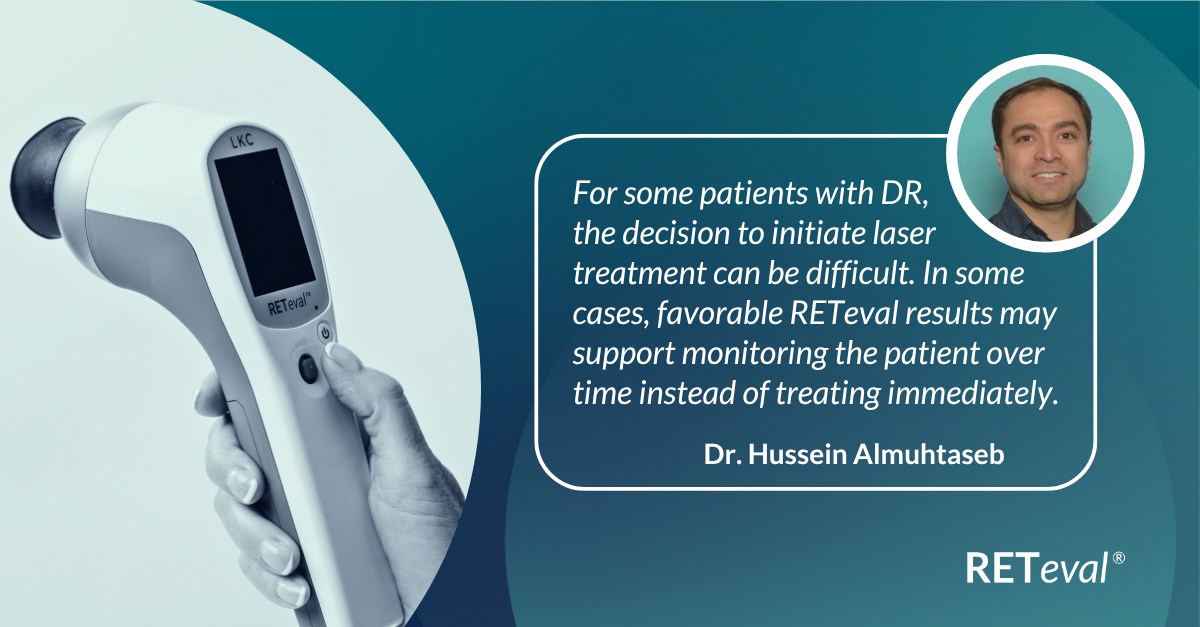
ERG Supports Treatment Decision in Diabetic Retinopathy
Focus on Diabetic Retinopathy
For some patients with DR, the decision to initiate laser treatment can be difficult. In some cases, favorable RETeval results may support monitoring the patient over time instead of treating immediately.
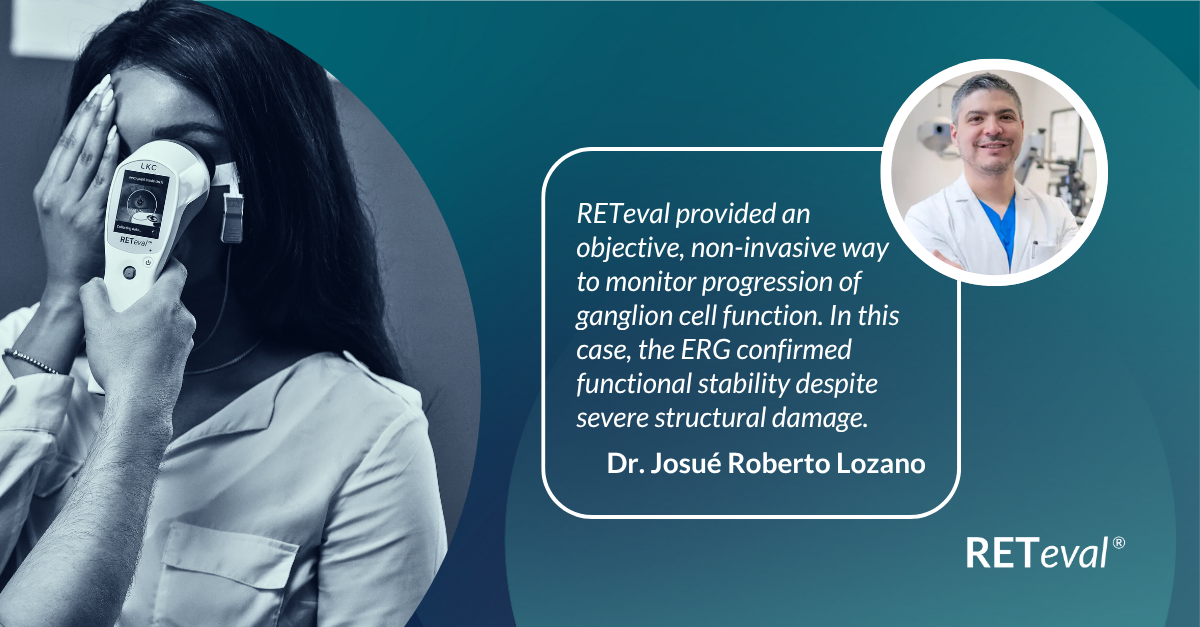
ERG Demonstrates Stable Function Despite Severe Structural Damage
Focus on Glaucoma
Explore how the RETeval provided an objective, non-invasive way to monitor progression of ganglion cell function.
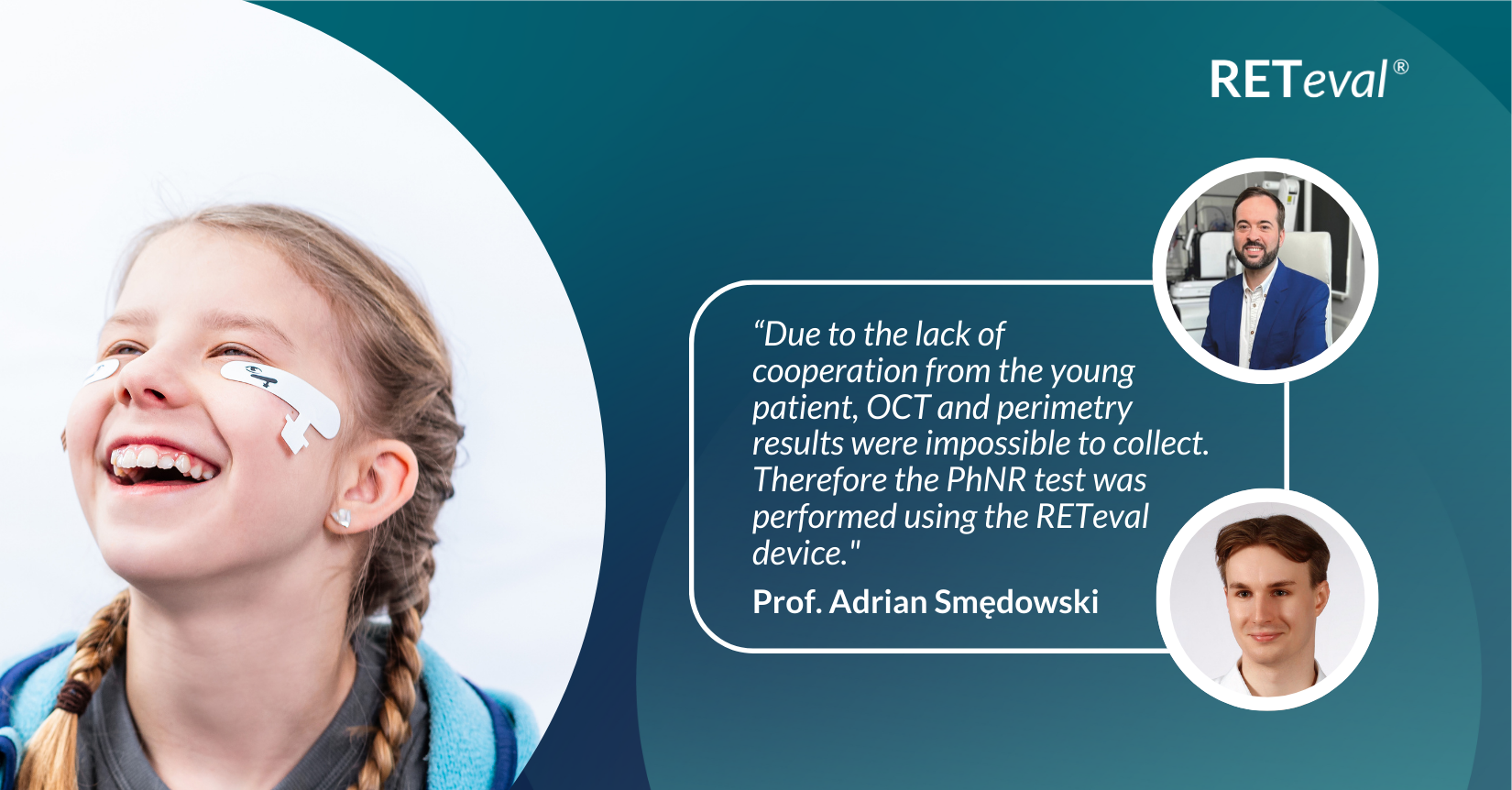
Photopic Negative Response as a Reliable Method for Glaucoma Follow up in Children
Focus on Glaucoma
Using PhNR for pediatric glaucoma monitoring when OCT and perimetry aren’t possible. This case study from the Medical University of Silesia demonstrates how the Photopic Negative Response (PhNR) test using the RETeval® ERG device supported diagnosis and treatment monitoring in a 7-year-old girl with congenital glaucoma.
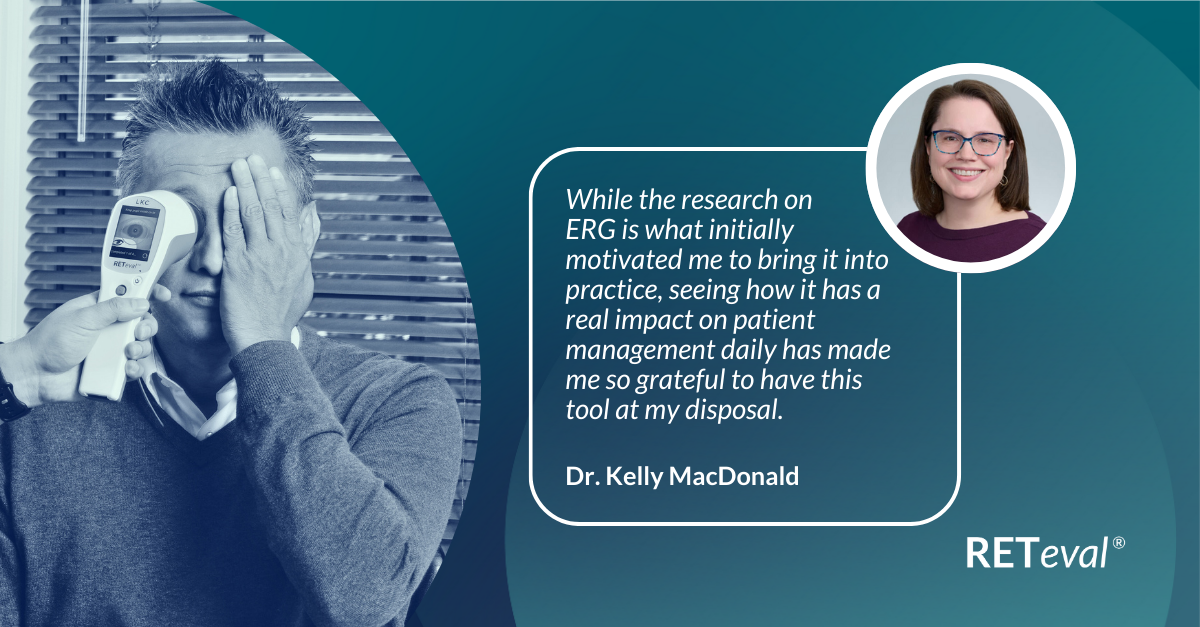
A Tale of Two Patients: How ERG Uncovered Hidden Differences
Focus on Diabetic Retinopathy
Explore how Dr. Kelly MacDonald treated two patients that visited her office in the same day and presented very similarly, until ERG uncovered their hidden differences.

Vision Complaints Reflected on ERG
Focus on Diabetic Retinopathy
Faced with a diabetic patient reluctant to change his habits despite bothersome vision loss, Dr. Nate Lighthizer used the RETeval DR Score to demonstrate risk and motivate him to begin nutritional supplementation.

The Predictive Value of Combining Diagnostic Technologies
Focus on Diabetic Retinopathy
Explore this case as Dr. Paul Chous leverages his RETeval to determine an appropriate follow-up schedule.
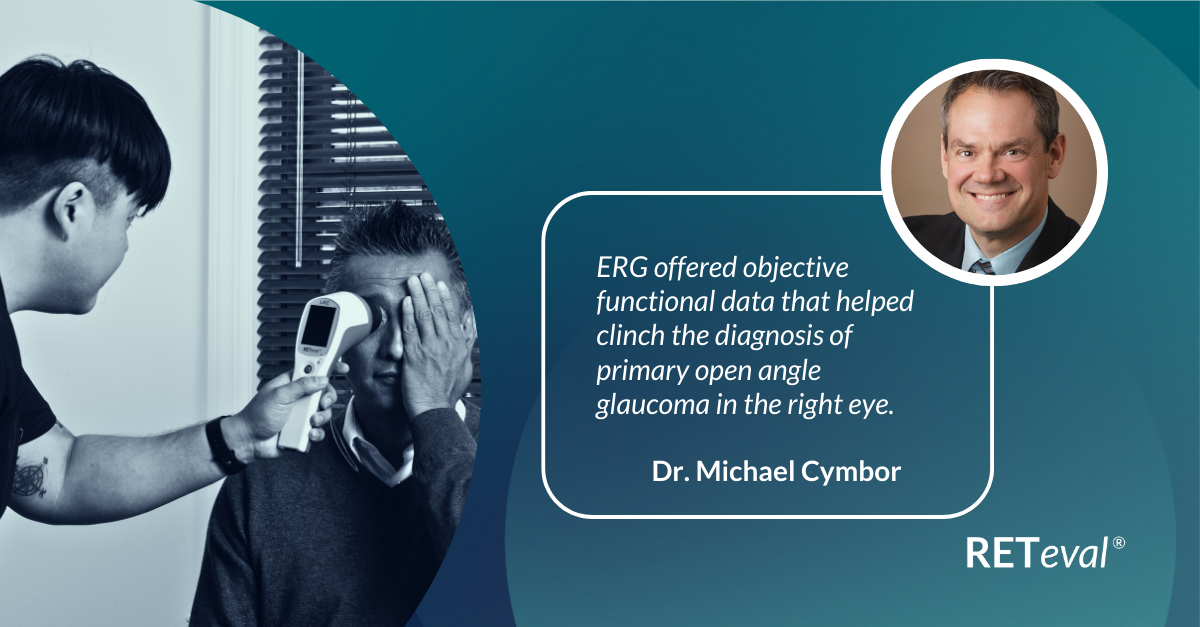
ERG Provides Clarity When Fields and OCT are Inconclusive
Focus on Glaucoma
Explore this case by Dr. Michael Cymbor that represents the complexity and overlap between diabetic retinopathy and hypertensive retinopathy.
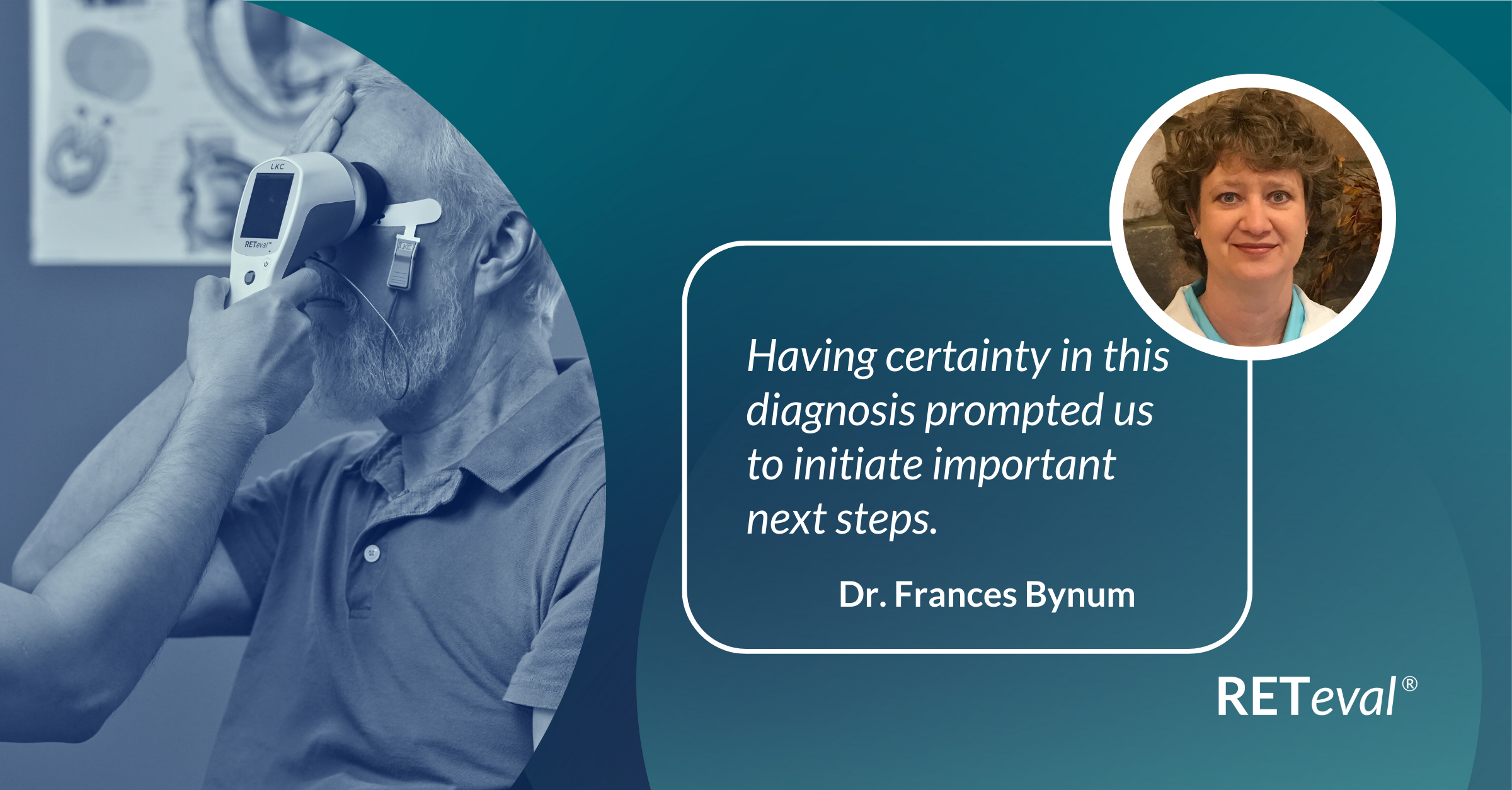
ERG Raises Red Flag, Changing Management Trajectory
Focus on Retinitis Pigmentosa
A complaint of difficulty driving at night is not uncommon for an optometrist to hear, but when one patient mentioned this during his routine exam, his visual acuity of 20/20 signaled Dr. Frances Bynum, OD, FAAO, to look further.

ERG Provides Confidence to Monitor or Treat
Focus on Glaucoma
Explore how Dr. Nate Lighthizer treated a patient who was diagnosed with glaucoma five years prior and referred to his clinic for additional testing.
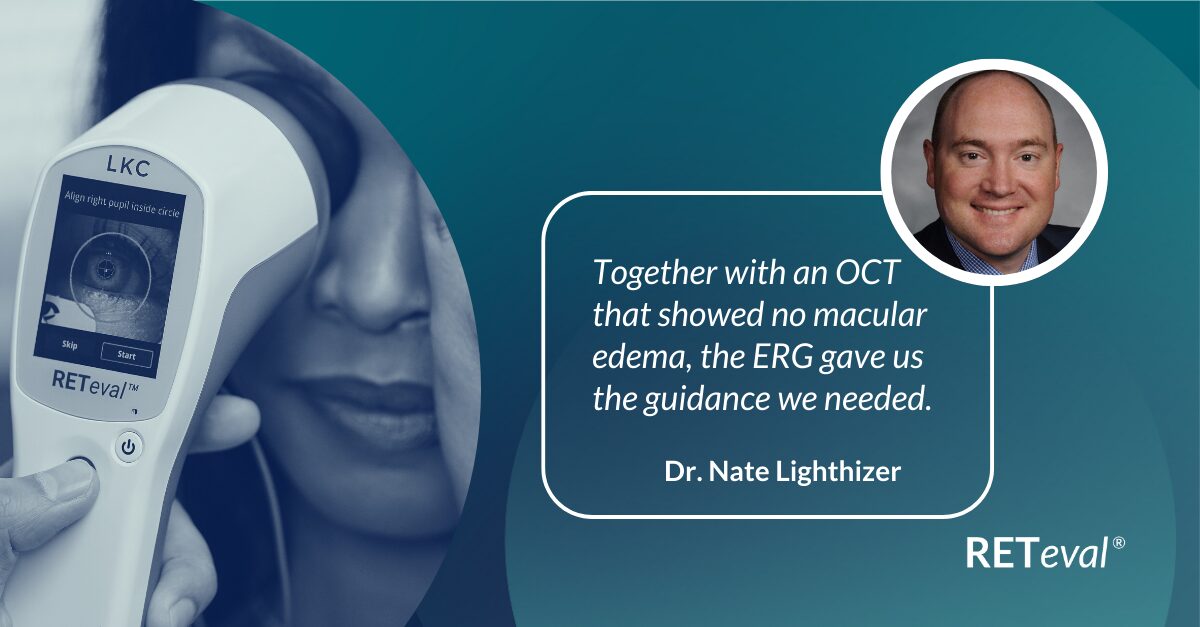
ERG to Determine Ischemic Status
Focus on Retinal Vein Occulsion
Explore how Dr. Nate Lighthizer treated a 50-year-old female patient who initially presented for punctal plugs. Although she wasn’t scheduled for a retinal evaluation, a resident noticed reduced vision in her left eye.
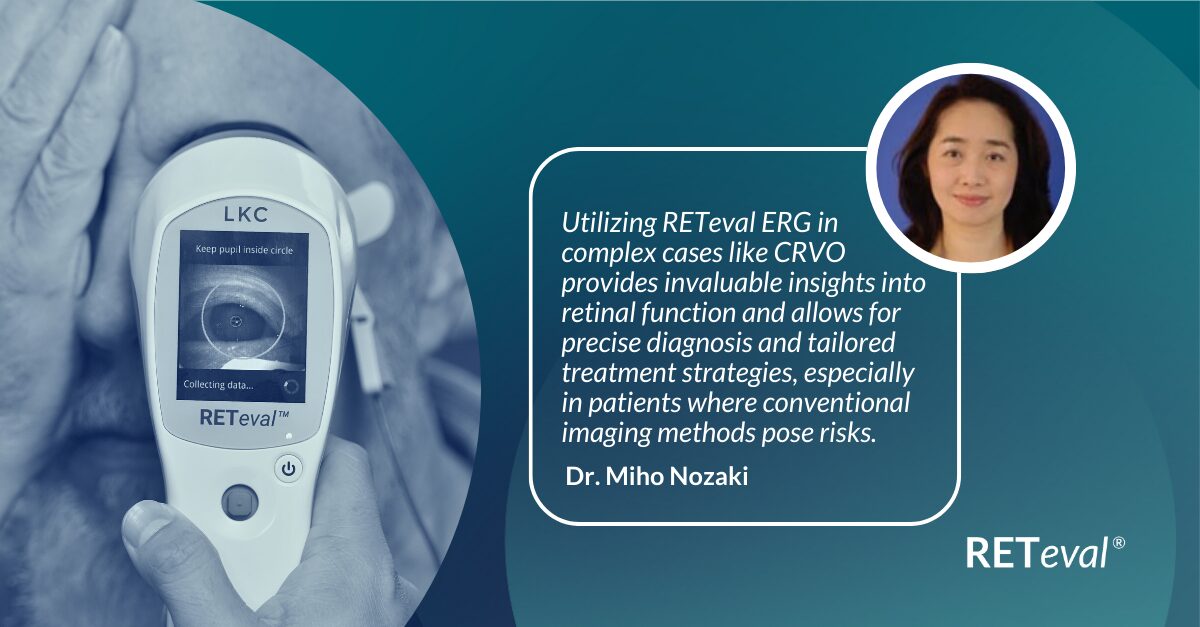
ERG to Replace FA for CRVO Treatment Decision
Focus on Central Retinal Vein Occlusion
Dr. Miho Nozaki demonstrates the value of RETeval ERG for diagnosing CRVO in complex cases, where conventional testing poses risks.
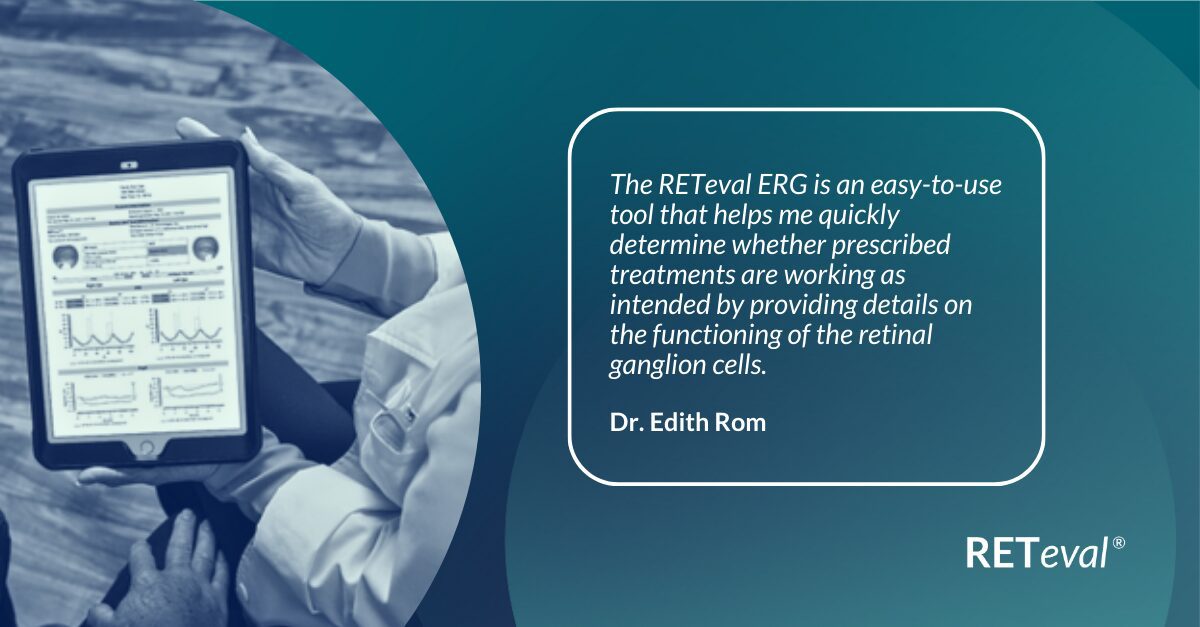
Using ERG to Monitor Glaucoma
Focus on Glaucoma
Explore the use of Electroretinography (ERG) in managing Glaucoma through a case study by Dr. Edith Rom, Germany.

ERG Alters Follow-up Schedule and Education for Patient with Diabetes
Focus on Diabetic Retinopathy
A 33-year-old Native American female presented because she lost her glasses a year prior. From a visual standpoint, she was doing well. She didn’t report any changes in her vision and was corrected to 20/20 in both eyes (-1.25 OD, -1.00 OS). Her last A1c was 10.0, which is certainly higher than we would like to see.
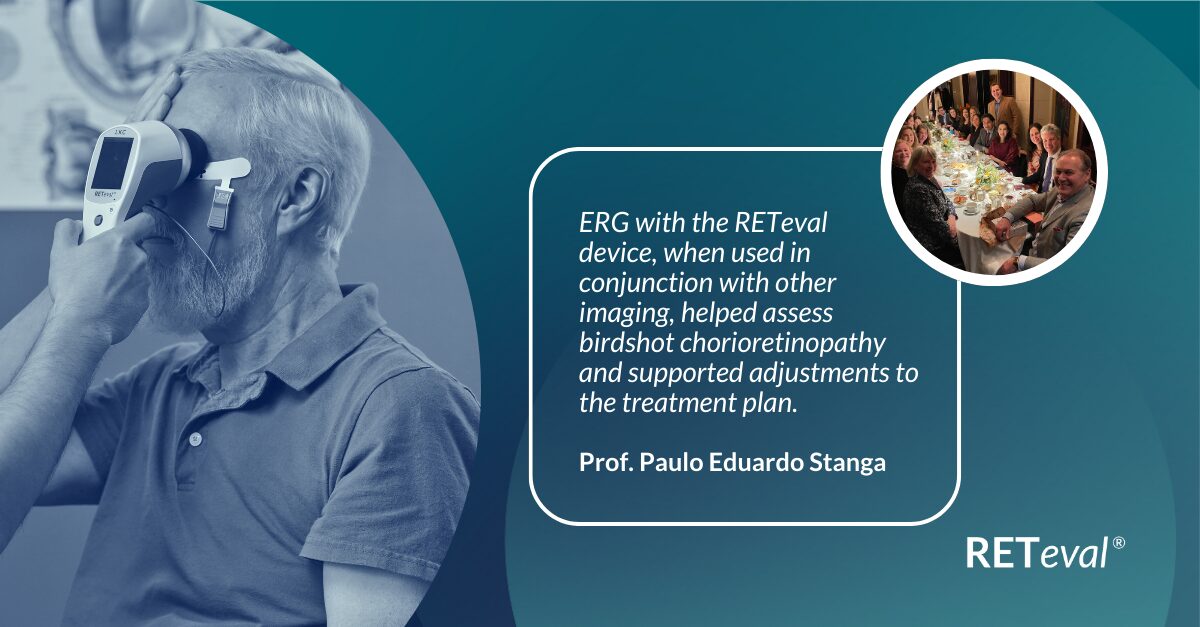
Using ERG for Management of Birdshot Chorioretinopathy
Focus on Retinal Inflammation
Explore the use of Electroretinography (ERG) in managing Birdshot Chorioretinopathy through a detailed case study by Prof. Paulo Eduardo Stanga and team at The Retina Clinic London. This study examines a 62-year-old patient’s journey from initial diagnosis to advanced treatment, including intravitreal therapy and immunosuppressive therapy.
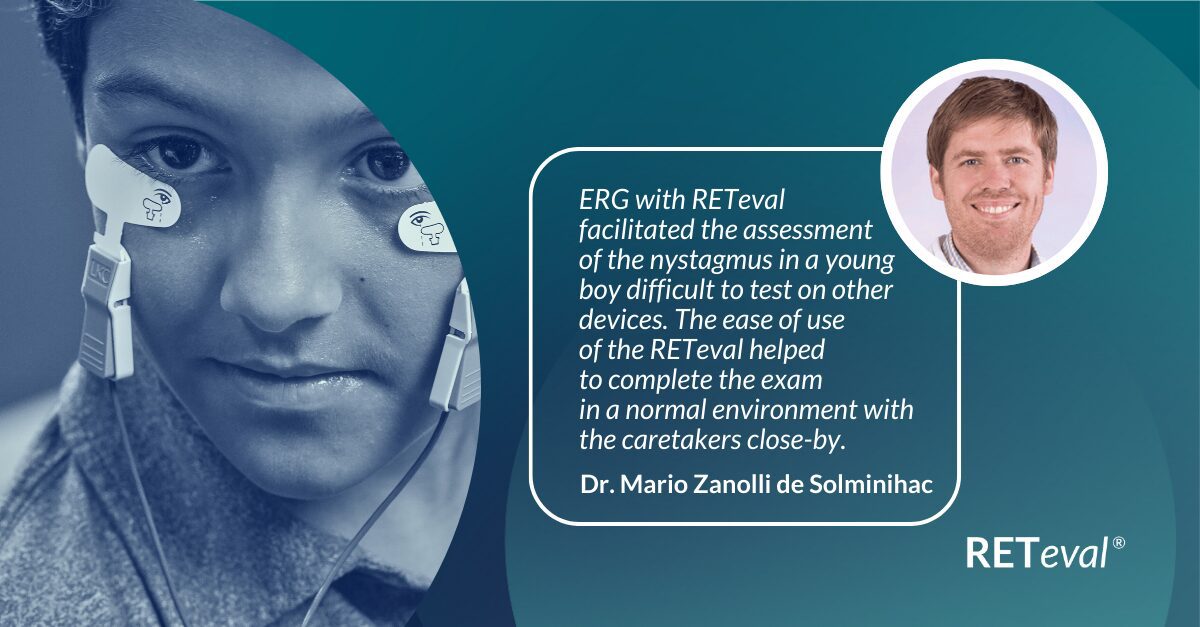
Comprehensive Pediatric Assessment Using ERG in Challenging Cases
Focus on Inherited Retinal Degenerations
Learn how Dr. Mario Zanolli utilized ERG to assess a 4-year-old boy with nystagmus when standard imaging techniques proved challenging. This case study demonstrates the effectiveness of ERG in pediatric cases where traditional methods may not provide clear results.
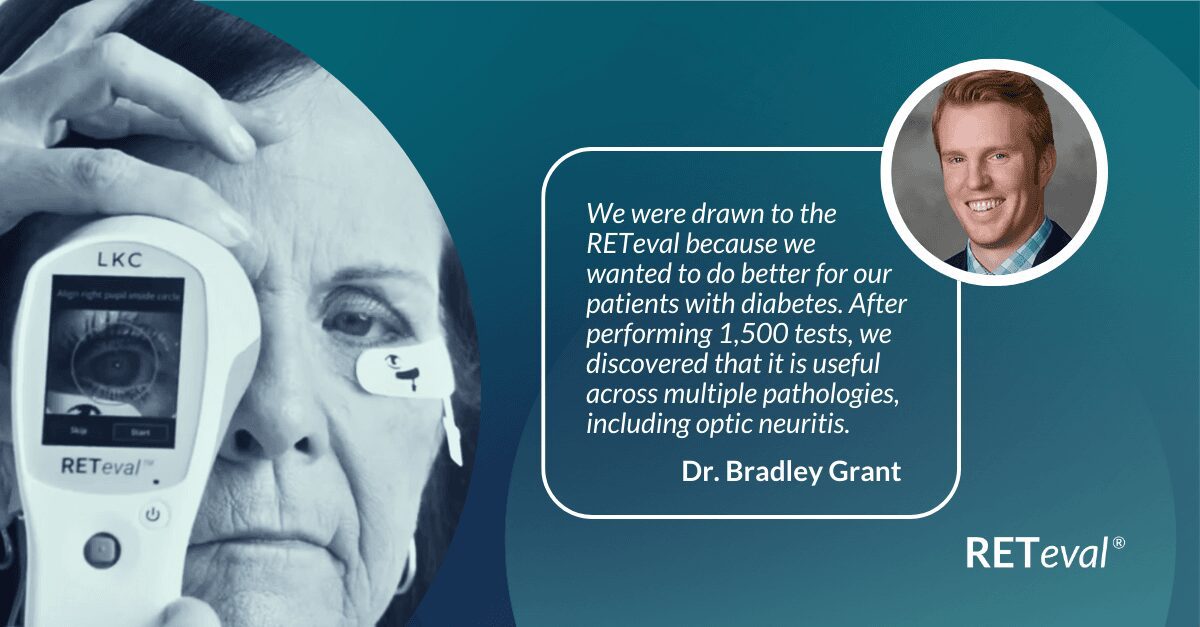
Routine ERG Use Supports Patient Management
Focus on Optic Neuritis
Subjective functional assessments don’t always yield useful information. Bradley Grant, an optometrist in Shelbyville, IL, utilized his RETeval handheld ERG to determine the appropriate follow-up schedule for a patient with multiple sclerosis, while leveraging the easy-to-interpret, objective functional data to educate the patient on the importance of resuming care with their neurologist.
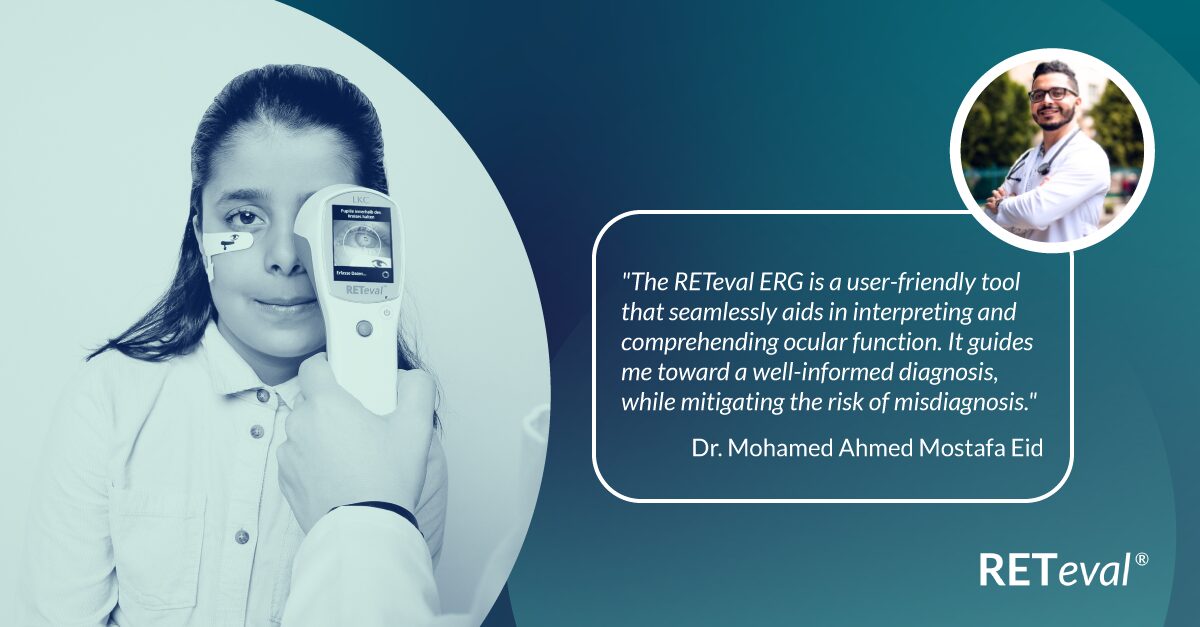
ERG Above and Beyond Retinal Imaging
Focus on Inherited Retinal Degenerations
A 7-year-old child was referred to confirm a multiple sclerosis (MS) diagnosis following a brain scan. The patient complained of visual changes but identifying the cause was complex due to limited patient cooperation. We obtained color fundus and OCT images, both of which appeared to be normal. A flash visual evoked potential (VEP) test was conducted at another clinical site, but the outcome was unreadable.
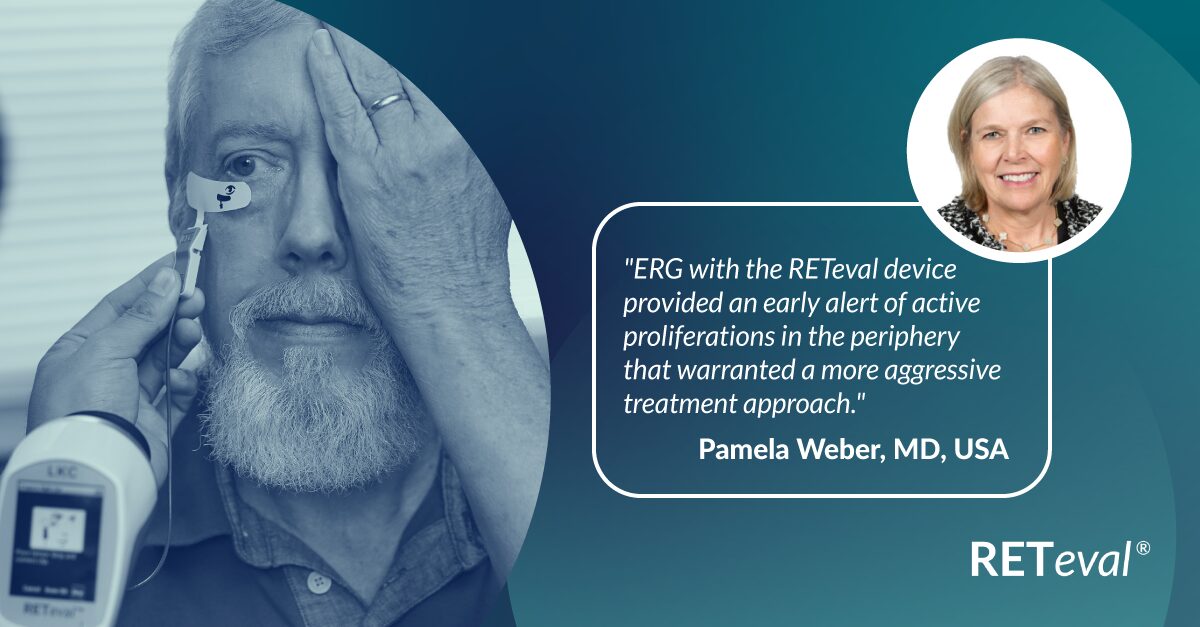
ERG’s Role in Diabetic Retinopathy Progression Monitoring
Focus on Diabetic Retinopathy
Explore how Dr. Pamela Weber used the RETeval ERG/VEP to monitor the progression of diabetic retinopathy in a 39-year-old patient with type 1 diabetes. The case study shows how early detection and monitoring with advanced retinal imaging can lead to timely and more aggressive treatment, improving patient outcomes.
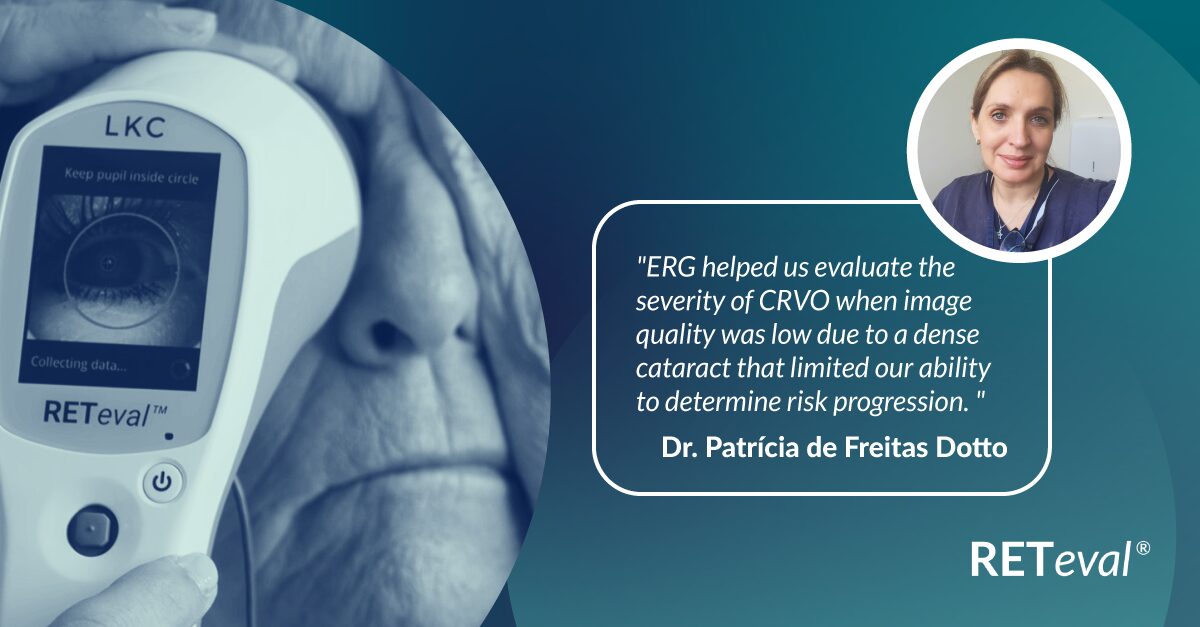
Avaliação de Risco para CRVO baseado em ERG
Focus on Central Retinal Vein Occlusion
This case study involves an 87-year-old female patient sought medical attention due to gradual vision loss. She presented with a two-month history of blurred vision OD, a dense cataract and 20/200 best corrected visual acuity (BCVA).
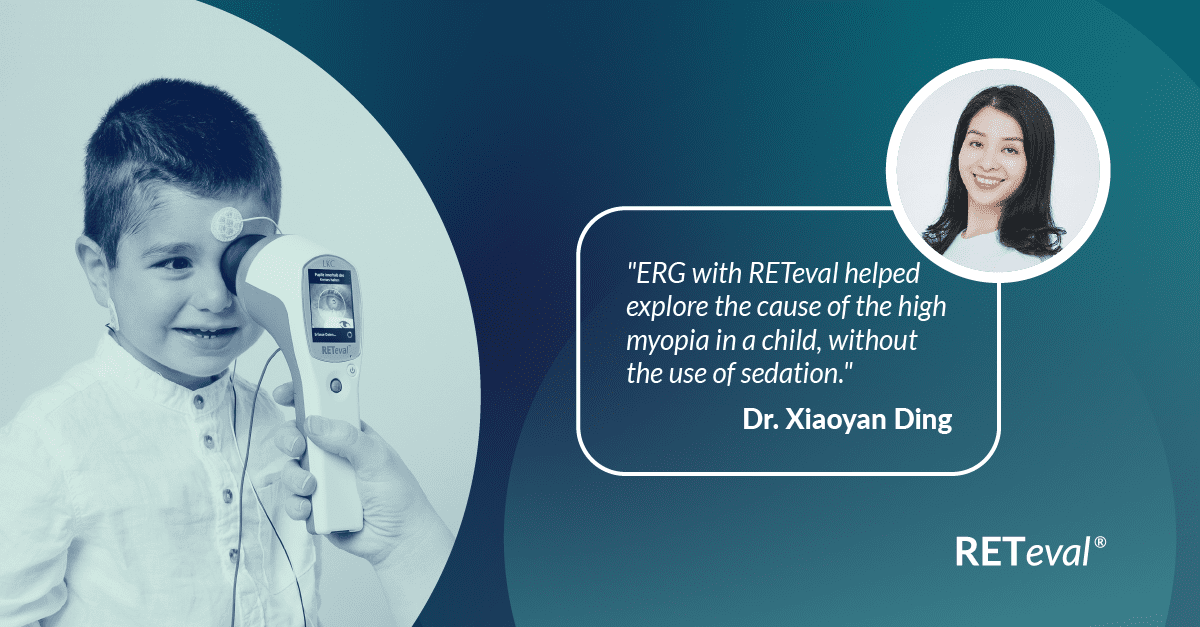
ERG Supports Diagnostic Accuracy in a Pediatric Patient
Focus on Myopia
This case study involving a 3-year-old boy with bilateral high myopia (-6.25D and -7.00D), normal structural results, and no extraocular features demonstrates how ERG addresses these challenges.
More about the RETeval ERG/VEP device
Popular Topics: Make a Difference in Diabetic Retinopathy Care | Glaucoma Evaluation with RETeval PhNR Test | RETeval Device Reference Data | RETeval in Optometry
Case Studies: ERG Demonstrates Stable Function Despite Severe Structural Damage | ERG Supports Treatment Decision in Diabetic Retinopathy | Photopic Negative Response as a Reliable Method for Glaucoma Follow-up in Children | A Tale of Two Patients | Vision Complaints Reflected on ERG | Predictive Value of Combining Diagnostic Technologies| ERG Provides Clarity When Fields and OCT Are Inconclusive| ERG Raises Red Flag, Changing Management Trajectory | ERG Provides Confidence to Monitor or Treat | ERG to Determine Ischemic Status | ERG to Replace FA for CRVO Treatment Decision | Using ERG to Monitor Glaucoma | Routine ERG Use Supports Complex Patient Management | ERG Alters Follow-up Schedule and Education for Patient with Diabetes | Using ERG for Management of Birdshot Chorioretinopathy | Using ERG to Monitor Glaucoma | Comprehensive Pediatric Assessment Using ERG in Challenging Cases | ERG Above and Beyond Retinal Imaging | ERG’s Role in Diabetic Retinopathy Progression Monitoring | Avaliação de Risco para CRVO baseado em ERG | ERG Supports Diagnostic Accuracy in a Pediatric Patient
Ebooks: Core Cases from the Clinical Compendium | Modern Fundamentals of Diabetic Retinopathy Management in Optometry | Elevating Patient Care with ERG
Articles: Electroretinography Added to AAO’s Diabetic Retinopathy Preferred Practice Pattern Guidelines | How Comfortable is the RETeval for Patients? |The Use of RETeval ERG/VEP in Pediatric Ophthalmology | How RETeval ERG Has Enhanced My Practice | The Use of RETeval ERG/VEP in Pediatric Ophthalmology | The Ultimate Guide to Diabetic Retinopathy in Primary Eyecare | What Type of Functional Testing Do You Prefer for Patients with Diabetes? | Major Milestone: RETeval Referenced in over 200 Publications | Collaboration to Elevate the Standard of Care for DR | Is ERG Needed if You Have Access to a Good Structural Imaging Device? | A Straightforward Approach to Managing and Supporting Patients with Diabetes | Simplify Grading and Risk Assessment in Diabetic Retinopathy | Simplify Daily Decision-Making with Modern ERG | Objective Functional Testing Needs in Diabetes and Glaucoma | Why Modern ERG is Re-Defining Diabetes Management | Diabetic Retinopathy Management Protocols for Optometry
Videos: RETeval: More Information, Better Decisions | RETeval: Eliminating Confusion in Clinic | RETeval: Function to Rely On | RETeval Handheld ERG: Features & Benefits | RETeval: Enhancing Collaborative Care | Handheld ERG for Primary Eyecare | Advice for Optometric Colleagues about Handheld ERG | Making a Difference in Diabetic Retinopathy Care | Changing the Way We Think About Electrodiagnostics | ERG Testing Made Simple | VEP Testing Made Simple | ERG Waveform | Introduction to Visual Electrophysiology | A Superior DR Progression Risk Assessment with the RETeval dispositivo | Improve Glaucoma Management with the RETeval Handheld ERG Device | Reshaping the Retinal Diagnostic Landscape | New Solutions for Infants with ROP | Using the RETeval in Myopia Research
Webinars: ABCs of ERG | Ready for RETeval | ERG in Action | Blueprint for Functional Assessments | Predicting Vision Loss in a Busy Retina Practice | Objective, Functional Testing for Glaucoma? | Best Management Practices for Diabetic Retinopathy | How the RETeval Device Became a Daily Instrument in my Diagnostic Toolkit
